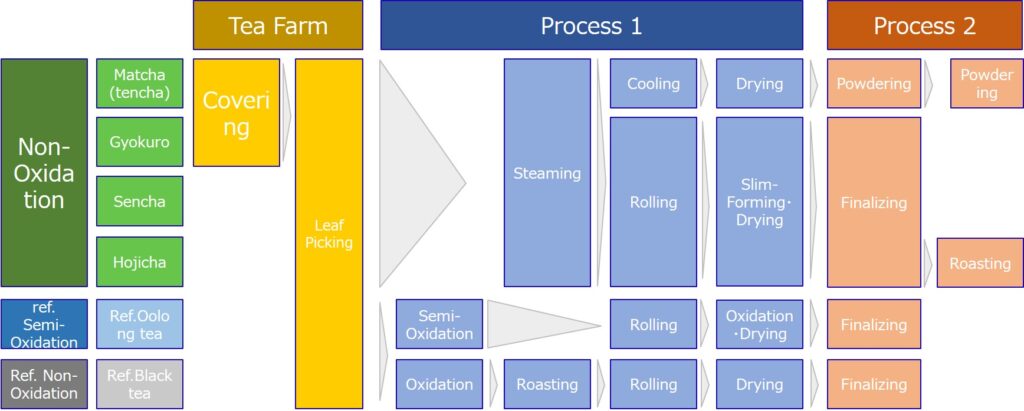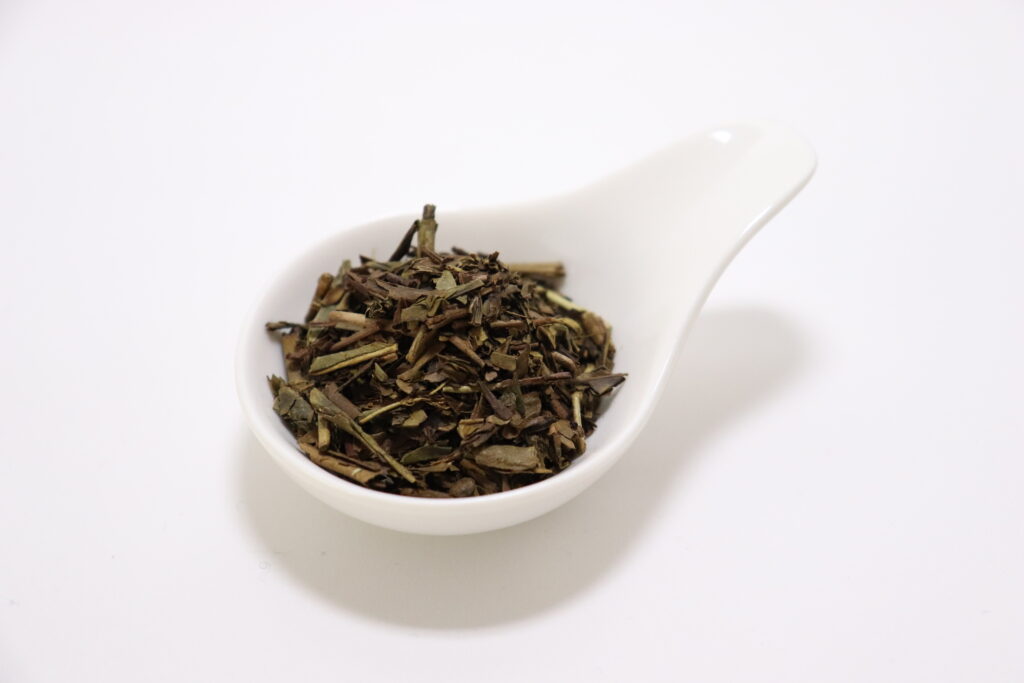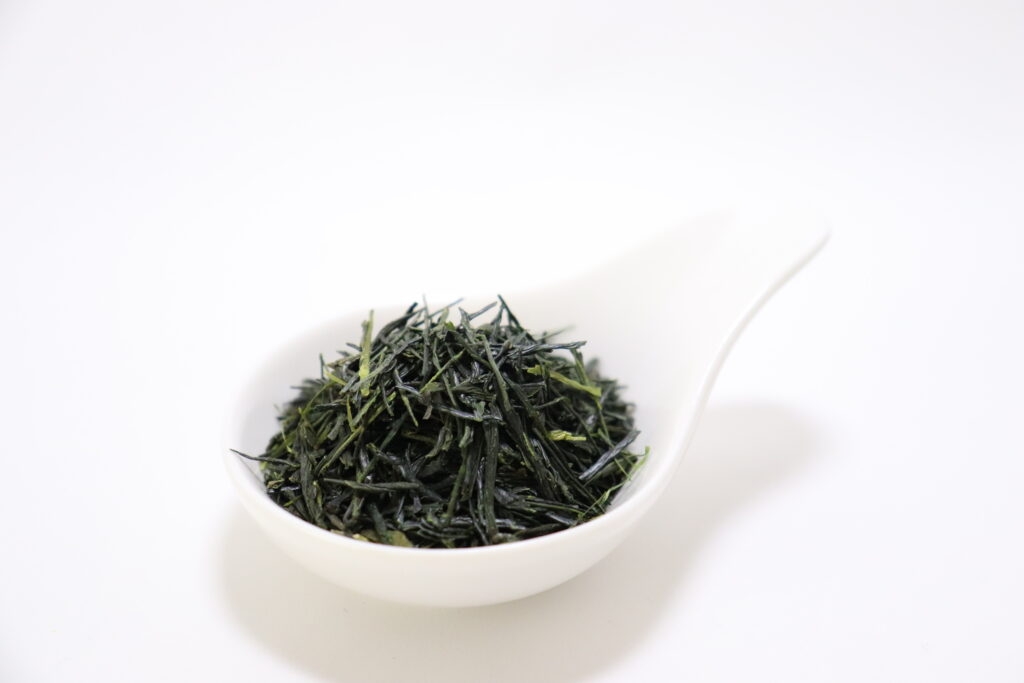Chart for manufacture of Japanese green tea

■ Covering Process : Good taste (“umami” taste) of green tea is coming from theanine (https://en.wikipedia.org/wiki/Theanine). Excessive photosynthesis changes theanine to catechin which produces a bitter taste. The covering process has an effect to make excessive photosynthesis stop.
■ Steaming Process: Allows us to enjoy the original, basic taste of the green tea leaf . After picking Japanese tea leaves, they naturally oxidize and the taste changes. The steaming process stops oxidation to keep the original taste of the green tea leaf.

(cf. Black tea perfectly makes leaves oxidize, and Oolong tea makes leaves half-oxidize.)
■ Drying (with heat) -Rolling Process : The process of turning tea leaves and drying
them with heat makes the leaves softer and easy to roll or “slim”. We can now easily
extract many good components such as theanine, catechin and vitamins from the leaves.
These rolled “needle-like” leaves can be used to make cups of tea more than one time,
while maintaining their good, rich taste.
■ Slim – Forming Process : Forming slim leaves protects from extracting all good taste
of Japanese green tea during its first brew.
During the brew process these leaves open gradually which allows us to make enjoyable green tea from leaves that can be brewed several times.
Organic matcha

Uji matcha, which is synonymous with high quality matcha in Japan, is grown in small quantities. Organic matcha is even more rare and valuable. We have spent several years searching for the best organic Uji Matcha. We are proud to offer you the best of the best, carefully cultivated in the southern part of Kyoto Prefecture. Organic matcha is becoming increasingly more popular as no chemicals or pesticides are used in its production process.


Uji Matcha
The highest quality matcha produced by an “Emperor’s Cup” winner. This matcha is grown by a single farmer in Uji City, Kyoto Prefecture, and is carefully hand-picked to give it a low bitterness and delicious aftertaste.

Hojicha (roasted green tea)
creasingly popular. Roasted sencha and processed hojicha is characterized by its low bitterness and strong aroma.

Other products we offer
- Matcha kukicha (stem tea)
- Gyokuro
- Sencha
- Karigane

Our Features
Direct from the farmer
Single farmer products (no blends).
Hand-picked matcha
Only about 1% of Uji matcha produced is hand-picked.
Organic Uji matcha
Organic matcha from Kyoto is very rare and valuable.
Development of matcha shaker
Patented in Japan and the U.S.

Production Process of Matcha

Matcha is carefully hand-picked.

Tencha (the leaf veins are removed before the matcha is ground.)

Grinding using stone mortars.

You can enjoy the taste of matcha without sweets.
The Best Time to Drink Matcha
Matcha can be drunk at any time of the year.
After summer, as autumn arrives the taste matures and becomes even more delicious.
We grind only the required amount of matcha for a year to deliver fresh matcha to you.
Matcha is best stored in the refrigerator or freezer to maintain its flavor.
The nutritional value of matcha
Some of the nutrients found in matcha
(just a few examples)


